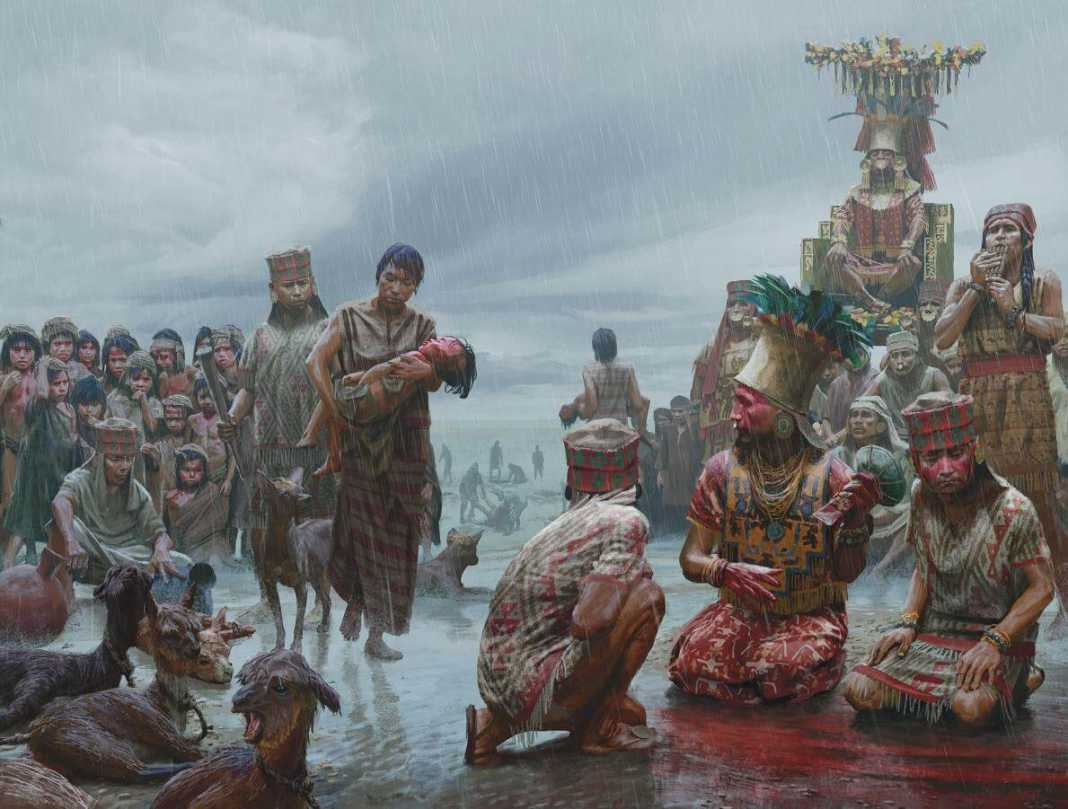Human sacrifice has been around for centuries — the Maya, Aztecs, and ancient Egyptians killed prisoners of war, volunteers, and slaves over the course of their histories. But clear evidence of mass killings of children is rare in the archaeological record.
Previously, evidence of the largest youth sacrifice ever — 42 children — was discovered at Templo Mayor in Tenochtitlán, the ancient Aztec capital. The Chimú people blew that record out of the water.
Some 500 years ago, the Chimú in what is now Peru ritually killed hundreds of their young in the largest mass child sacrifice events known in world history. The burial is part of a site called Huanchaquito-Las Llamas (HLL) in the Province of Trujillo, just 350 meters from the shore and 2 miles north of the ancient city of Chan Chan, which was the largest pre-colombia city in South America and the capital of the Chimú state.

The burial was hidden from sight until 2011, when locals discovered bones poking out of eroding sand. By the time excavations concluded in 2016, archaeologists had unearthed 137 children, three adults and 200 animals believed to be young llamas — all sacrificed at about the same time. The rope and textiles found in the burials are radiocarbon dated to between 1400 and 1450.
Coastal Peru’s arid climate and salty soil helped preserve the bodies, retaining details that show some children had their faces painted with red cinnabar; others wore cotton headdresses.
After the Chimú children were sacrificed, their remains were arranged in groups of three by chronological age, often resting on their backs or sides with their legs flexed. Children were placed facing northwest, toward the ocean. The llama bodies were placed on top of or next to them, facing east toward the Andes Mountains.
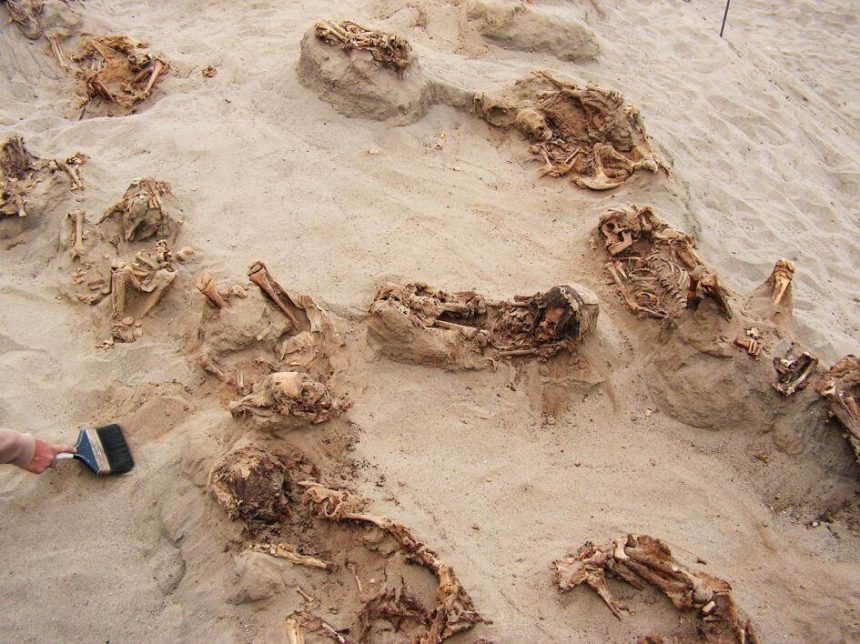
Laboratory analysis so far has determined that the boys and girls were in good health and ranged in age from 5 to 14, with a majority of them between 8-12 years old. About a dozen of the children had modified cranial vaults, a practice that indicated their association with a particular ethnic group within the Chimú civilization.
Many children’s remains were found with broken ribs and other injuries. After examining the remains from Huanchaquito, researchers confirmed that the children and animals were deliberately killed in the same manner—with a horizontal cut across the sternum. Consistent cuts across the chests suggest an experienced hand made them, possibly to remove the hearts while the children were still alive. Cut marks on the llama bodies suggest their hearts were taken, too.
But reconstructing events at Huanchaquito is difficult, mainly because archaeologists and historians know very little about the Chimú. Clues to what might have led to the sacrifice lie in the soil itself. A layer of mud at the site suggests the event happened after heavy rainfall.

Archeologists say the children were sacrificed to the Chimú gods in an attempt to end natural disasters linked with the El Niño phenomenon.
Chan Chan’s population was sustained by carefully managed irrigation systems and coastal fisheries, both of which could have been thrown into disarray by the higher sea temperatures and heavy downpours associated with the climatic event. A severe El Niño, the researchers theorize, may have shaken the political and economic stability of the Chimú kingdom. Its priests and leaders may have ordered the mass sacrifice in a desperate attempt to persuade the gods to stop the rain and the chaos.
The trauma of the ancient climate events may therefore help explain the sacrifice. Matthew Piscitelli, an archaeologist at the Field Museum, suggests that it may be difficult for us to imagine carrying out this sacrifice, “but you need to put yourself in their shoes. How would you react if the world as you know it was crumbling around you, with catastrophic flooding and searing droughts? Without meteorology, where would you turn? In this case, it might have been religion and a belief that only the ultimate sacrifice would appease what the Chimú thought were angry gods.“
How the children were chosen for their terrible fate remains a mystery. Scientific studies show that those killed at Huanchaquito were both boys and girls, all of whom appear to have been well cared for, with little sign of malnutrition or disease. Isotopic analysis of their teeth suggests that they came from many regions of the sprawling Chimú Empire.
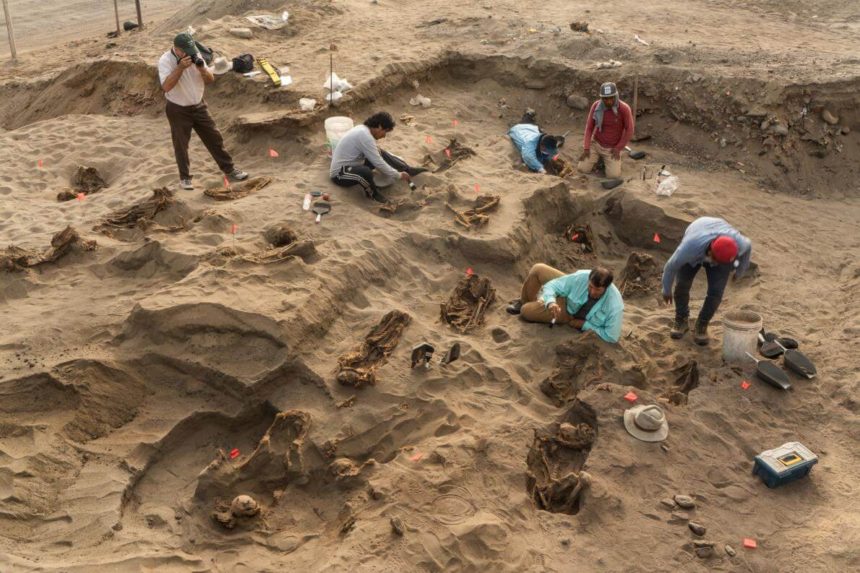
The chimú state
The Chimú state flourished between the 11th and 15th centuries AD, dominating a broad expanse of the Peruvian coast.
At its peak, the Chimú Empire controlled a 600-mile-long territory along the Pacific coast and interior valleys from the modern Peru-Ecuador border to Lima. Only the Inca commanded a larger empire than the Chimú in pre-Columbian South America, and superior Inca forces put an end to the Chimú Empire around A.D. 1475.
Chan Chan is the name given today to the ancient capital of the Chimú state. It was one of the largest urban settlements of the Americas, and includes large palaces built by the successive kings, as well as administrative compounds, plazas, cemeteries, gardens, and temples linked by a network of internal roads. Although today the surviving ruins of Chan Chan cover approximately 14 square kilometers, the city was once substantially larger; approximately six square kilometers of the site has been destroyed by modern agricultural and urban expansion.
The Chimú left no written records, so other than archaeological findings, what little is known of them comes from Spanish chronicles.
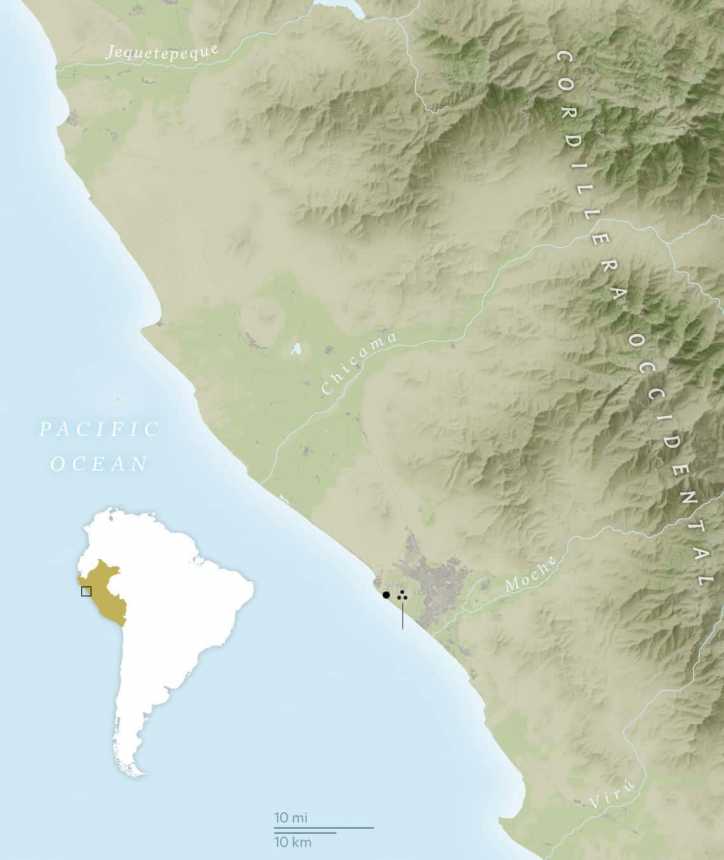
It’s the largest mass child sacrifice to date in the archaeological record
In pre-Columbian cultures, child sacrifice is well-documented. The Incas, for example, sacrificed children during or after important events—sometimes known as a capacocha ritual. Evidence of child sacrifice is also found in Maya, Aztec and Teotihuacan civilizations. Unlike in other pre-Columbian cultures, there was little evidence of child sacrifice in Chimpu state—until the mass grave was found.
More burials were uncovered on a nearby site in the summer of 2018. The second site, named Pampa la Cruz, yielded more children and llamas to add to the total. The running tally is 269 children, 466 llamas, and 3 adults.
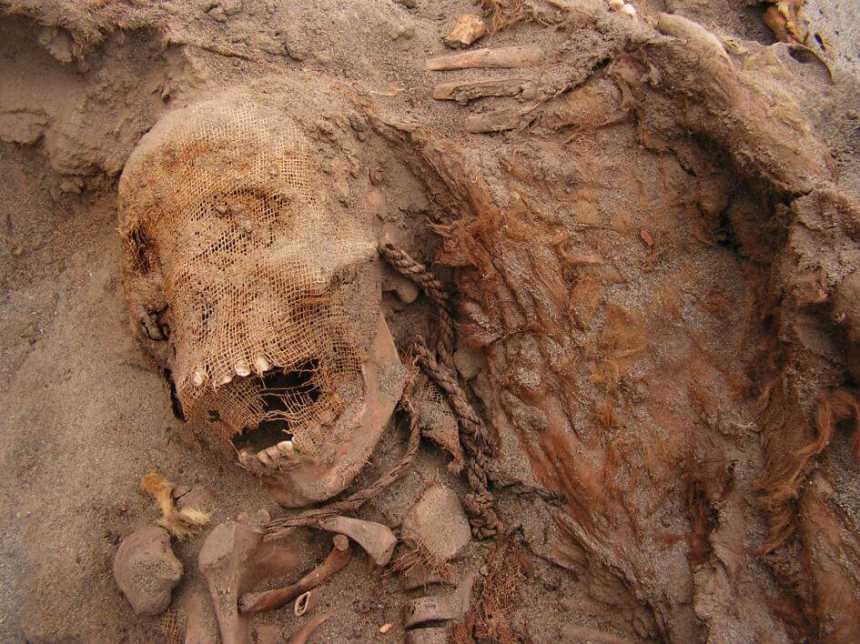
In our time and culture, the violent death of even one child rends all but the most callous hearts, and the specter of mass murder horrifies every healthy mind. And so, we wonder: What desperate circumstances might account for an act that’s unthinkable to us today?


